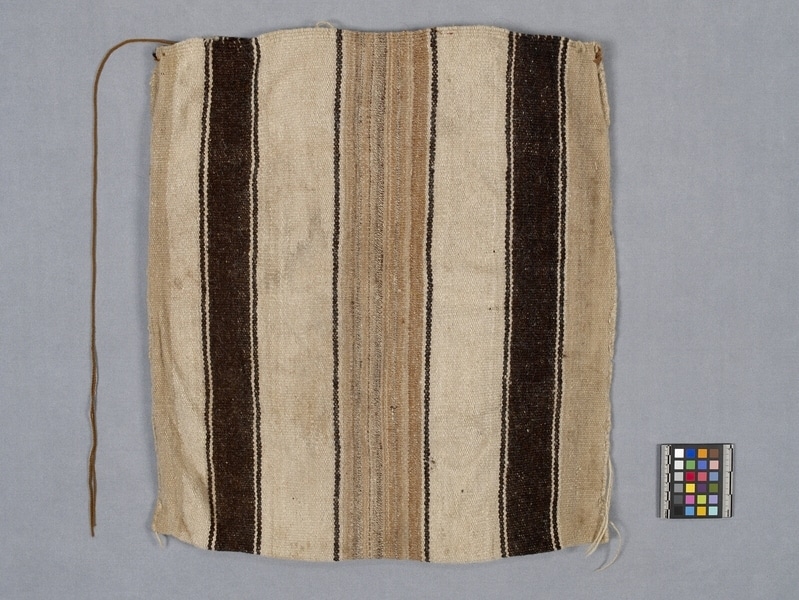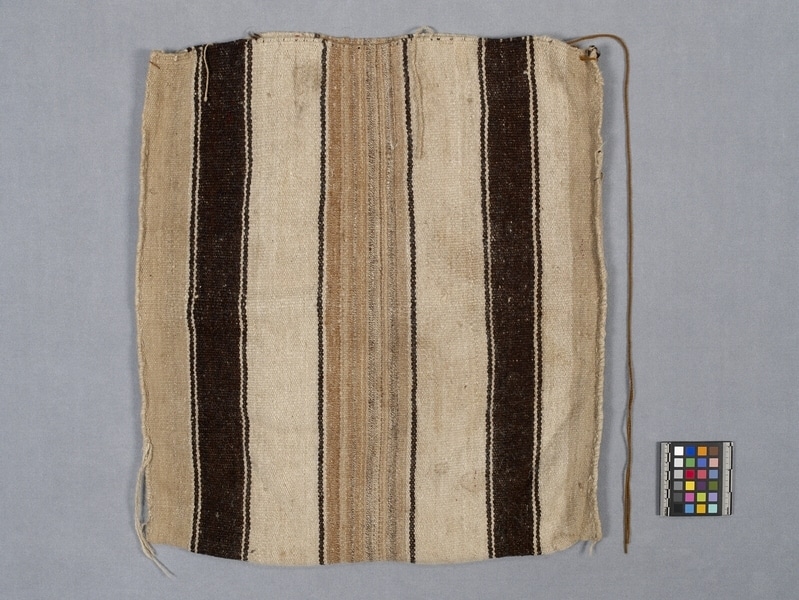Bag Item Number: Sf989 from the MOA: University of British Columbia


Description
Bag, rectangular, with vertical stripes in shades of light to dark brown on a light brown ground. The bag has an orange-brown cord strap.
History Of Use
Warp-faced fabrics with three or four selvedges are woven by women on the indigenous style loom, a staked-out horizontal ground loom, or an adjustable tension (body) loom. The technique and structure have pre-Conquest antecedents, and as in ancient times, the fabrics are used in their rectangular form without cutting or shaping. Striped woven sacks are the traditional containers for trading between areas of different altitude. They are also used for storing and carrying crops locally. Weavers sit on them or spread them beneath ground looms, they also used them for storing textiles in the house.
Cultural Context
trade;storage
Specific Techniques
Plain colour areas or stripes are warp-faced plain weave. Alpaca and sheep's wool are z spun and plied s. Warp-faced plain weave. Construction is by folding and sewing a four selvedge rectangle. Running stitch used for side seams and closely spaced overcastting makes a ridged edging along the seam. A re-twisted synthetic yarn is replied and attached to one corner of the bag mouth.
Narrative
Bought from Esteban Huatta Cruz who said his mother, Mercedes, made it. He said the alpaca came from Suni Pampa where it was bought from compadres or trading partners. Used to carry potatoes for trade with the Aymara people. Also used for carrying crops to other parts of Taquile.
Item History
- Made by Mercedes Huatta Cruz ? (Maker) in Taquile, Puno, Peru before 1983
- Collected by Elizabeth L. Johnson during 1984
- Owned by Elizabeth L. Johnson before June 13, 1984
- Received from Elizabeth L. Johnson (Seller) and Museum of Anthropology Shop Volunteers (Funding source) on June 13, 1984
What
- Name
- Bag
- Identification Number
- Sf989
- Type of Item
- bag
- Material
- wool fibre and alpaca wool fibre
- Manufacturing Technique
- woven, spun, sewn and plied
- Overall
- height 56.3 cm, width 51.6 cm
Who
- Culture
- Quechua
- Creator
- Mercedes Huatta Cruz ? (Maker)
- Field Collector
- Elizabeth L. Johnson
- Previous Owner
- Elizabeth L. Johnson
- Received from
- Elizabeth L. Johnson (Seller) and Museum of Anthropology Shop Volunteers (Funding source)
Where
- Holding Institution
- MOA: University of British Columbia
- Made in
- Taquile, Puno, Peru
When
- Creation Date
- before 1983
- Collection Date
- during 1984
- Ownership Date
- before June 13, 1984
- Acquisition Date
- on June 13, 1984
Other
- Item Classes
- textiles
- Condition
- good
- Accession Number
- 0992/0020